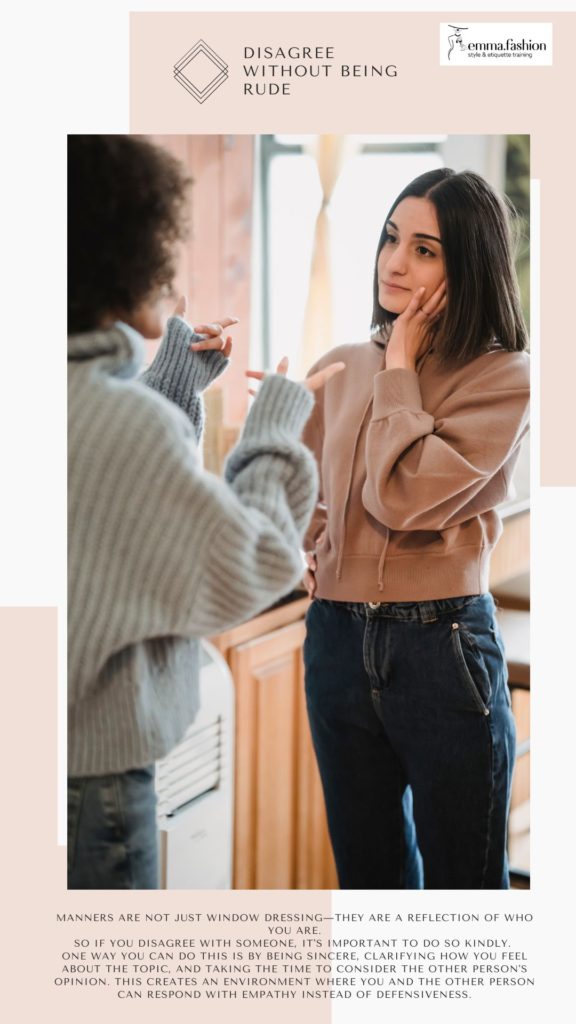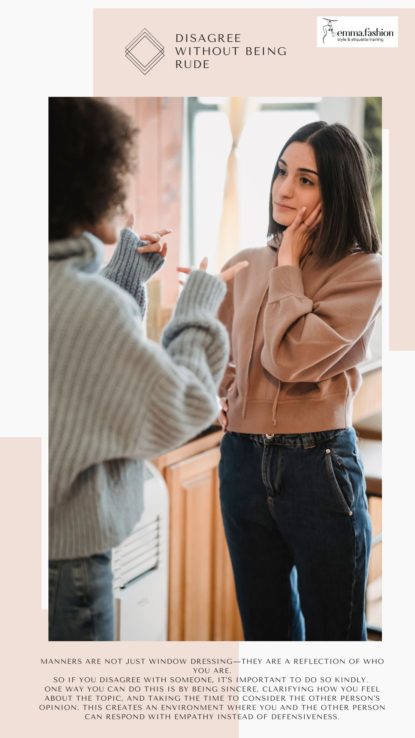How to disagree without being rude
Manners are not just window dressing—they are a reflection of who you are.
Emma.Fashion
Treat others how you want to be treated. That’s a simple rule that goes a long way in life. It may seem common sense, but it’s easy to forget when you’re caught up in the moment or a hurry. You’ll never regret being polite and considerate, but you might regret being rude or dismissive.
If you disagree with someone, it’s important to do so kindly. You don’t have to be a pushover, but if you can disagree without being rude, people will respect your opinion and want to hear more from you.
When someone disagrees with you, they’re not attacking you or getting personal—they’re just expressing their own opinion. So you can respond with a respectful disagreement that lets them know you’ve heard what they’re saying and have decided not to agree with them.
One way you can do this is by being sincere, clarifying how you feel about the topic, and taking the time to consider the other person’s opinion. This creates an environment where you and the other person can respond with empathy instead of defensiveness.
Etiquette Tips to Disagree with Someone Without Sounding Rude
Use respectful language and avoid name-calling or insults.
- You may feel angry or upset when someone disagrees with you, but that doesn’t mean that the other person is wrong. It just means that they see things differently than you do.
- Try to keep your cool and stick to the debate at hand.
Acknowledge the other person’s point of view
- When someone disagrees with you, they’re not attacking you or getting personal—they’re just expressing their opinion.
- For example, if someone says they think cats are better than dogs, you don’t need to agree. Instead, you can say, “I guess I’m more of a dog person.”
- If you don’t want to acknowledge their view directly, tell them how much you appreciate their honesty. For example, if someone says they don’t like your favorite band and think they’re terrible musicians, you could say something like, “Wow! That’s so cool that we’re both honest enough to disagree about this!”

Use “I” statements instead of “you” statements
- It helps make the other person feel like they’re being listened to and shows that you’re trying to understand their perspective. So, for example, instead of saying “you’re wrong,” try saying “I think differently.”
- If someone is rude to you, instead of saying, “You are so rude,” try saying, “I feel offended when you say that.”
- When you’re having a difficult conversation, it’s important to create an environment where they can respond with empathy instead of defensiveness.
Try not to criticize them personally
- If you have a different opinion from theirs, find the positive aspect of what they’re saying or ask questions about their reasoning instead of just telling them, “that won’t work.”
- Also important: don’t interrupt or make any sort of face or noise that might be misconstrued as negative when someone else is speaking.
Try not to use sarcasm or make fun of the other person’s point of view
- Don’t talk down or try to convince them that they’re wrong (even if they are).
- Instead, try saying something like “I see what you mean” or “That makes sense.” This will show that you respect their opinion even if you disagree with it right now.
Overall, it’s more important to communicate your ideas clearly and persuasively than to be right all the time. Remember that disagreement is a natural part of a discussion, and there’s no need to get upset when someone has a different opinion. As long as you’re respectful in your language, you should be able to keep things going smoothly.





Comments